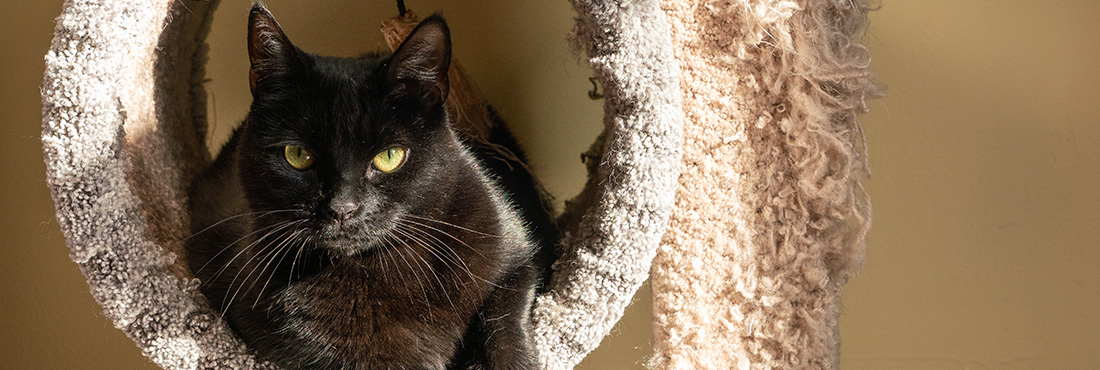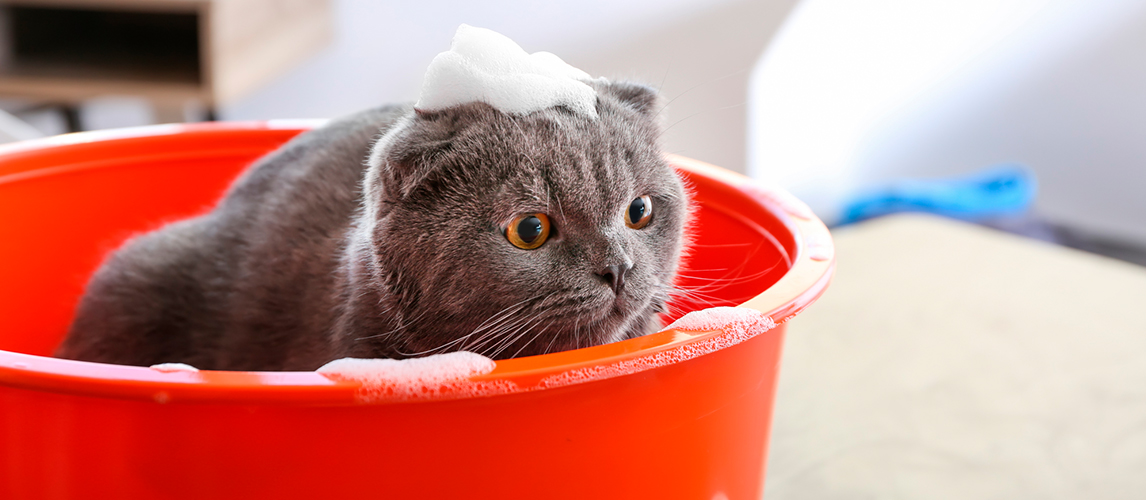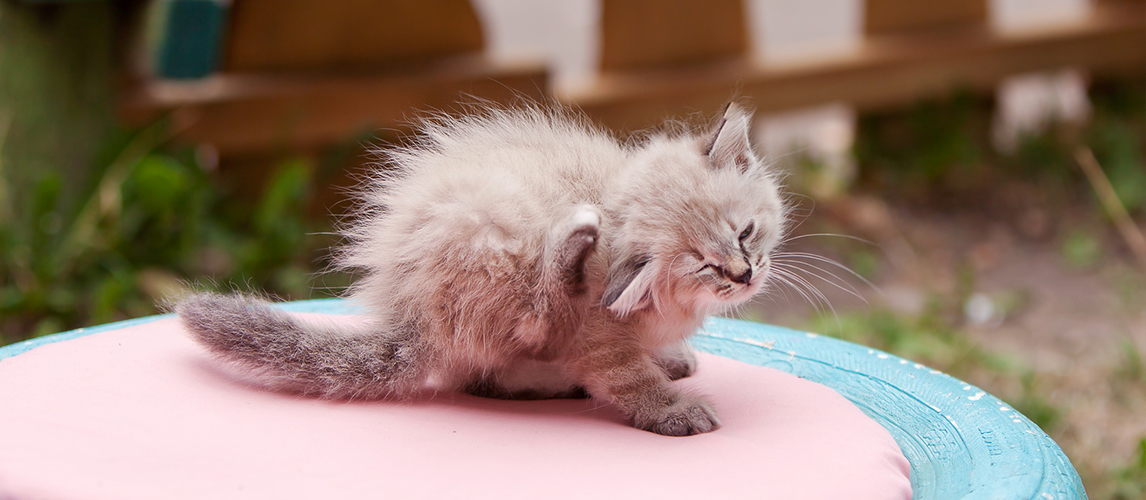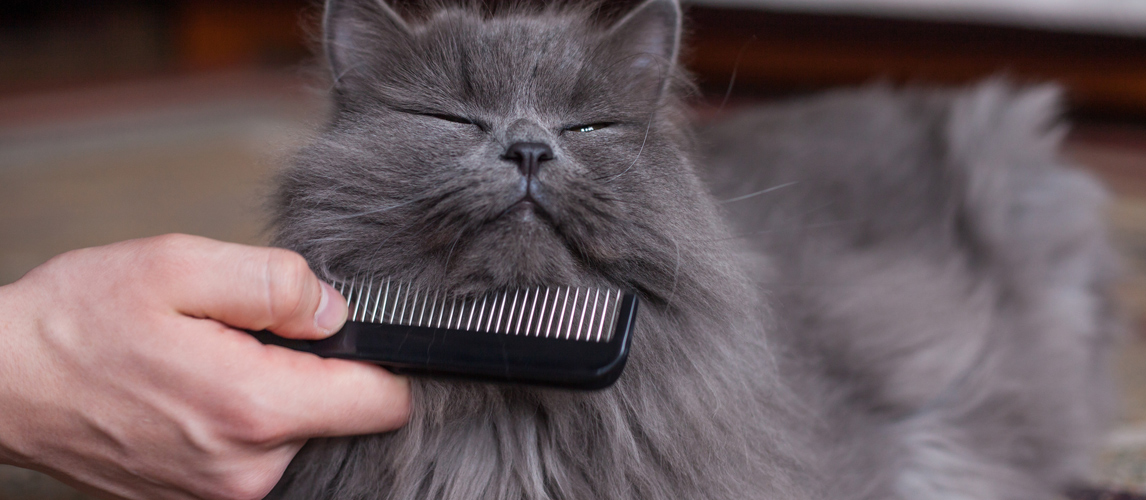To us humans, dandruff is common, but it can often spiral into something a little more troublesome if left untreated. You may be surprised to learn that cats can also develop dandruff, which is completely different from dander.
Below is a complete guide detailing everything you need to know about dandruff, including what it is, what causes it, its symptoms, and how to get rid of cat dandruff.
What is Cat Dandruff?
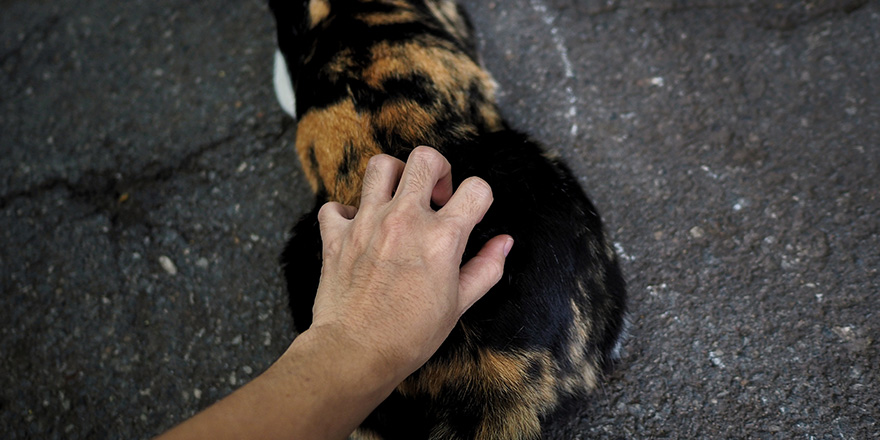
Like people, cats can also have dandruff. These skin flakes hide in their fur and on their beds and household furniture.
So what exactly is dandruff in cats? Feline dandruff is categorized as grey or white flakes that can be seen across your cat’s skin and hair, resulting in mild to excessive scratching due to dryness and itchiness. Dandruff in cats can be fairly mild, but in some rare instances, it can indicate a bigger health condition or other concerning skin problems.
What’s the Difference Between Cat Dander and Cat Dandruff?
It’s a misconception that dandruff and dander are the same things. Dander is completely normal and is something all cats produce. Some cat owners are led to believe that it is a sign of serious health concerns when it is perfectly healthy. To put it simply, dander is known as dead skin cells removed to make way for new skin cells.
On the other hand, Dandruff is a skin condition characterized as irritable, dry, sensitive, flaky skin. It often occurs when the sebaceous glands in your cat’s skin start to overproduce oil. Whereas these natural skin oils are good for keeping your cat’s fur in tip-top condition, too much of one thing can cause problems. In this case, the overproduction can begin to harshly irritate the skin, causing excess shedding.
Dander and dandruff can be evident across your cat’s body, but dandruff can be more obvious as you can see it on their coat, bedding, and furniture.
Main Causes of Cat Dandruff
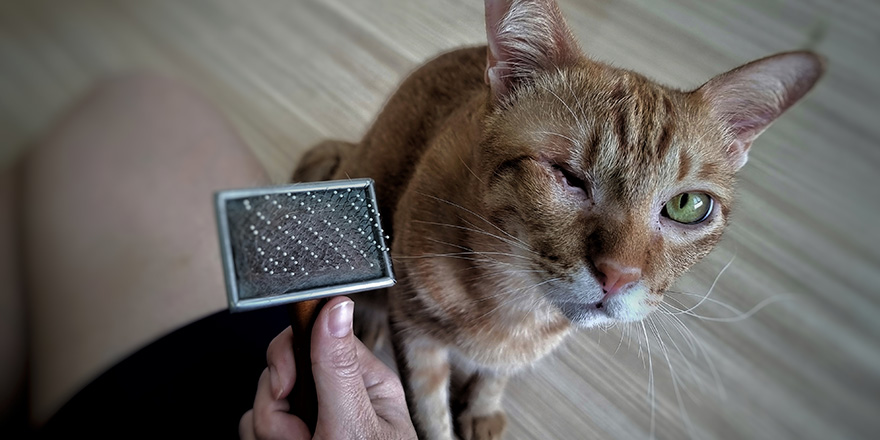
If you’re certain it’s not cat dander you’re seeing across their fur and your home, you may ask, ‘why does my cat have dandruff?’. It can be caused by many things, which are all listed below.
Poor Diet
Your cat’s dandruff can often result from a poor diet that lacks essential nutrients to keep them healthy inside and out. A balanced diet not only helps their internal health but will also provide nourishment for their skin and fur too.
Obesity
Overweight cats often find it difficult to groom properly, which can cause flaky dandruff. When cats groom themselves, they also help to distribute the natural oils, but if they can’t reach certain areas, the oils will build up, causing irritation.
Poor Grooming Practices
Most cats are adept at keeping themselves clean, but the odd few lack the skill. When cats neglect to groom themselves, the undercoat and overcoat will retain loose hairs and dead skin cells, causing them to develop dandruff.
Dehydration
Dehydration in cats isn’t uncommon and can be a prominent cause of itchy and dry skin. Moreover, dryness and itchy skin can also be caused by the temperature of your cat’s environment.
Disease or Illness
Cancer, hormonal conditions, a fungal infection, and kidney disease can attribute to a cat’s dandruff. In addition, food or general allergies can also be a cause of excessive shedding and difficult flaky skin. The reaction can cause the skin to become sensitive and itchy.
Furthermore, when your cat falls ill to a disease or illness, they can often be too uncomfortable to groom themselves properly.
External Parasites
On the other hand, if they are attacked by parasites such as mites, fleas, or lice, they can overgroom to relieve their discomfort resulting in dry skin. In addition, a parasite named Cheyletiella mites can cause a harmful contagious form of cat dandruff known as ‘walking dandruff’.
What are the Symptoms of Dandruff in Cats
The most prominent symptom of cat dandruff is the troublesome white flakes that spread out within your cat’s fur. However, there are several other signs to look out for that may suggest that your cat is struggling, including:
Excessive grooming (this can result in hair loss and eventual bald spots)
- Redness of the skin
- Scratching
- Gnawing
- Change in behavior
- Lethargy
How to Get Rid of Cat Dandruff
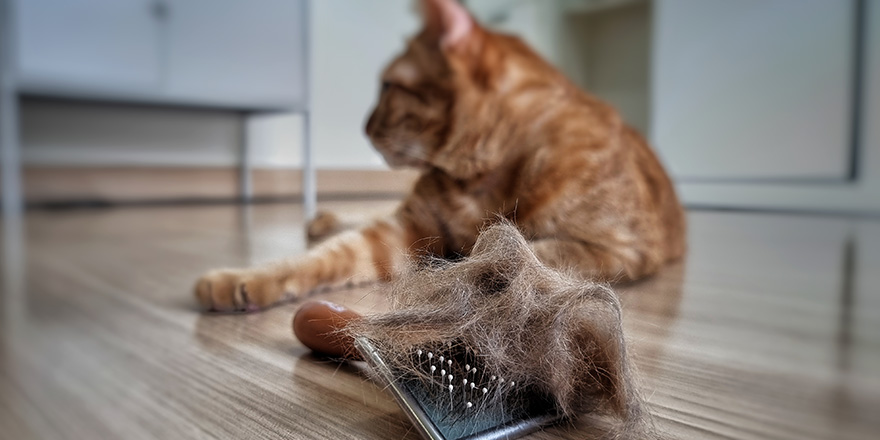
As troubling as this issue may sound, there are plenty of ways you can treat cat dandruff.
Switch to a High-Quality Diet
Your cat’s diet should consist of many nutrients that will benefit their overall health and skin health. In this instance, you may need to invest in cat food high in omega-3 fatty acids. You can also get your hands on formulas specially made for skin health.
Diets for Overweight Cats/Using Supplements
If your cat is overweight, plenty of options are available to help them drop the extra weight. These formulas contain fewer calories while offering vital nutrients to keep them healthy. In addition, you can also purchase supplements such as fish oil that can add extra moisture and nutrition to wet or dry food.
Hydrating Your Cat
If you feel dehydration is the prime culprit, it’s worth switching them onto a wet food diet to add extra moisture. Furthermore, try introducing them to a water fountain. A fountain is a great tool to encourage cats to drink more as they prefer running water sources.
Groom Them
If you’ve noticed that your cat doesn’t groom itself enough, it may be helping out. Brushing your cat regularly can help remove dead skin cells and loose and dead hair.
Cat Shampoo
An effective way to treat dandruff can be to try a specialized shampoo. Not only can it help to remove stubborn flakes and loose hair, but it can also help soothe and moisturize fur and skin.
Purchase a Home Humidifier
A humidifier can keep the airflow in your home moist to help your cat maintain healthy skin. This is especially effective in particularly hot and humid areas or homes that become particularly dry during the summer.
Seek Advice
If your cat’s flaky skin could be a side effect of a medical condition, it’s worth taking your feline friend to see a vet. Your vet may be able to provide a remedy or prescription to help ease the skin and fight irritation and dryness.
Sources:
- Wallenbeck I, Identification Of Dander-specific And Serum-specific Allergens In Cat Dandruff Extract, Europe PMC
- Dr. Lori Teller, Don’t Brush Off Feline Dandruff, Veterinary Medicine & Biomedical Sciences
- Itchy Cat – When It Is Not Fleas, International Cat Care
Note: The advice provided in this post is intended for informational purposes and does not constitute medical advice regarding pets. For an accurate diagnosis of your pet's condition, please make an appointment with your vet.

